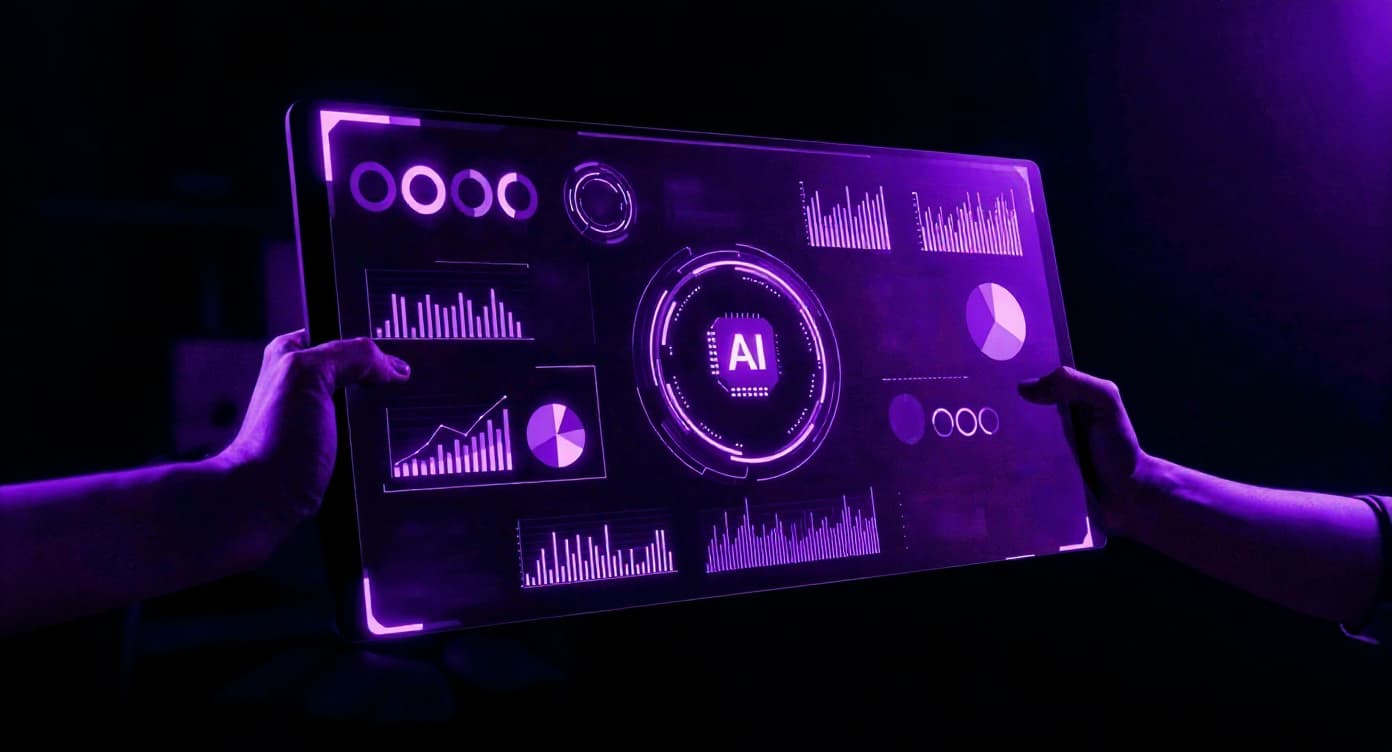
.webp)
.webp)
.webp)
.webp)

Even though the year is not yet finished, we can say that 2025 was wild. It has been one of the most transformative years in mobile advertising since the launch of SKAdNetwork. Think about it, Meta's Andromeda update, Google’s continued push towards privacy-preserving automation and the adoption of AI-native campaign formats across all major platforms had a huge impact on how growth teams operate.
A few defining developments from 2025:
The future is not a given but based on what happened in 2025 we can definitely see the following trends happening:
Google and Meta are already into AI-generated ad creatives with tools like Google’s Gemini powered asset labs in Performance Max and Meta’s Advantage+ suite. In 2026, both platforms will push even harder, with 70–80 % of served assets being fully or partially AI-generated, often without advertisers even toggling a setting.
Despite the clear efficiency gains (25–40 % lower CPAs and near-infinite variant testing), a growing wave of complaints is impossible to ignore: agencies lament the “death of creativity,” brand teams rage at off-brand creatives and users drown in soulless and repetitive ads. Creative teams that still work manually are being obliterated in speed and volume of the ones that use AI.
Backlash and ad fatigue are guaranteed but the AI arms race won’t slow down, if anything, it will accelerate. Governments and regulators will eventually impose labelling requirements, bias audits and opt-out mandates as ethical guardrails but these measures will not stop the wave. In 2026 the winners will be the ones who master the AI prompt not the ones trying to fight it.
In 2025 bidding and targeting became commoditized and the adnetworks prefer to use their algorithms to target the right audience rather than you doing manual hyper-focused targeting. Their AI becomes so good that two campaigns with identical budgets and the same product can deliver 3x or 5x ROAS purely based on the quality and volume of assets that you provide them.
What will move the needle for your campaigns are:
Since Chrome’s Privacy Sandbox and SKAdNetwork have made deterministic tracking based on device identifiers much tougher, we see more emphasis on the quality and structure of server-side signals rather than the ability to track every conversion. We see more emphasis on the quality and structure of server-side signals, not your ability to track every conversion. We also expect that the big ad networks will implement more advanced prediction models to anticipate better on the delayed SKAN postbacks. These improvements rely heavily on clean attribution data, which is why having a solid mobile attribution foundation is essential.
Predictive LTV Optimization will dominate performance marketing as platforms shift from event-based bidding to true revenue forecasting. Advertisers will no longer micromanage clicks, installs, or even purchases; instead, campaigns will launch with just three inputs: a target ROAS, the desired conversion funnel structure, and a package of creative assets. Advanced models will instantly predict each user’s lifetime value, retention probability, and likelihood of subscribing or making high-value repeat purchases. Budgets will automatically flow to audiences with the highest projected long-term profitability, even if their early signals appear expensive. This marks the end of short-term proxy metrics and the beginning of fully autonomous, profit-driven acquisition at scale. Marketers who master a minimalist campaign setup will outpace those still chasing vanity events. The machines finally understand customer lifetime value better than humans ever could.
We can clearly see that Meta is pushing all-in on AI. They will continue to optimize their engine and further push and reward Advantage+ campaigns. Expect:
Their message is clear: give us signals and creatives, we do the rest. This approach only works when the platform receives frequent and reliable server-side events. Advantage+ systems train themselves on high-volume, high-quality signals, and any delay or inconsistency weakens the model. That is why maintaining a robust Meta Ads integration is essential for accurate optimization.
Google is merging app campaigns with the same asset-driven optimization engine called PMax. As PMax becomes the default engine behind Google’s app delivery, the role of clean server-side data becomes even more important. Google relies heavily on real-time event streams to train its predictive models, and gaps in attribution directly reduce performance. A consistent Google Ads integration ensures that these signals remain accurate across devices and channels.
They will probably move towards:
Google is doing the same as Meta: maximum automation, simpler setup and deep reliance on first-party and server signals.
TikTok’s algorithm heavily depends on rapid engagement signals, especially in the first moments after an ad is shown. For marketers, this means that creative performance is inseparable from the accuracy of the underlying event tracking. To align with this shift, brands need a stable TikTok Ads integration that captures engagement and conversion signals with minimal delay. Their algorithm works a bit differently from Google and Meta’s because TikTok rewards creatives that cater for trends and are going viral. We expect the following additions in 2026:
LinkedIn is rapidly evolving from a recruitment-heavy platform into a full B2B advertising engine. For performance teams, this means that demand generation, account-based marketing, and paid media will become much more tightly connected. To make this work in practice, teams will need a reliable LinkedIn Ads integration that closes the loop between CRM, offline conversions, and in-platform optimization. We expect this to lead to:
The 2026 landscape will be defined by three things: clean signals, modular creative, and automated delivery. If teams don’t understand how attribution works behind the scenes, they will struggle to adapt their infrastructure to support predictive models and automation. Advertisers who invest early in robust infrastructure, server side events, predictive modelling, and streamlining the creative operations will outperform those still stuck in manual campaign management. The platforms have transformed themselves into a single inevitable model: you supply the raw inputs, and we model + optimise the outcomes.

